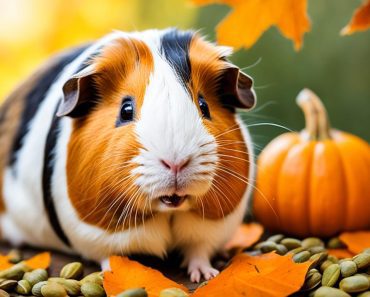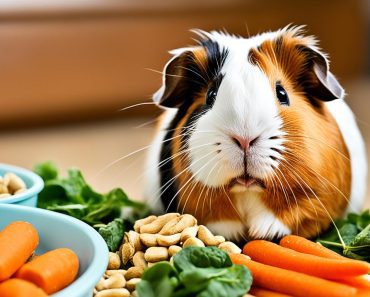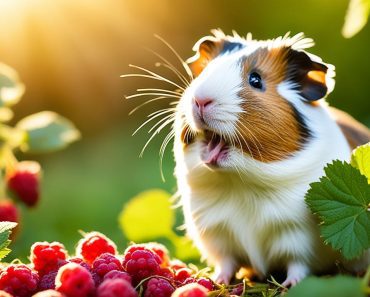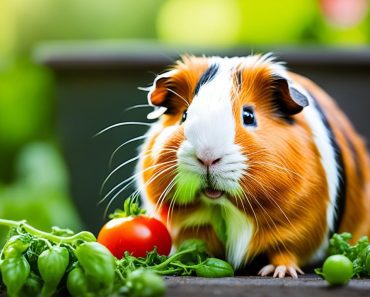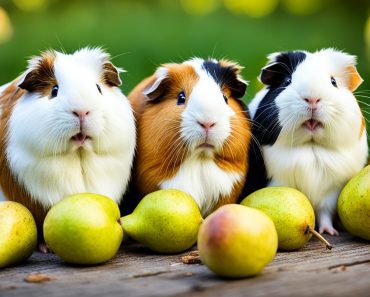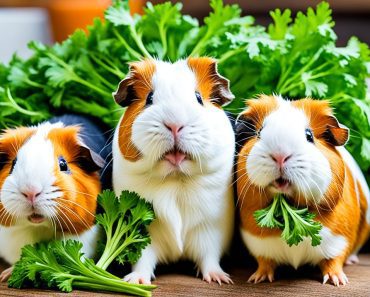As a guinea pig owner, I’m always conscious of providing the best care and nutrition for my furry friend. So when it comes to feeding guinea pigs oranges, I wanted to know if they are a safe and healthy option. After consulting with my vet and doing some research, here’s what I found.
Oranges can be a part of a guinea pig’s diet. In fact, they offer several nutritional benefits. Oranges are rich in Vitamin C, which is essential for guinea pigs as they cannot produce this vitamin on their own. They also contain fiber, calcium, and phosphorus, all of which contribute to good guinea pig health.
However, it’s important to feed oranges to guinea pigs in moderation. The high sugar content in oranges means that too much can be harmful to their health. Additionally, guinea pigs need a balanced diet, and excessive consumption of oranges can lead to an imbalance in their overall nutrition.
Can Guinea Pigs Eat Oranges? A very sweet yes!
- Oranges are generally safe for guinea pigs to eat, but should be fed in moderation due to their high sugar content.
- Oranges are a good source of Vitamin C, fiber, calcium, and phosphorus.
- Excessive calcium intake can be harmful to guinea pigs, so it’s important to monitor their overall diet.
- Wash oranges before feeding them to guinea pigs to remove any pesticides or chemicals.
- Ensure a balanced diet for guinea pigs by offering a variety of nutritious foods in addition to oranges.
Why You Need to Be Cautious About Feeding Oranges to Guinea Pigs
While oranges offer many valuable nutrients, it is important to exercise caution when feeding them to guinea pigs. Although guinea pigs can consume oranges, their high sugar content calls for moderation to prevent potential health issues. Excessive sugar intake may lead to complications in guinea pigs with diabetes or weight problems.
Guinea pigs also require a controlled calcium intake. While oranges do contain calcium, an excessive amount can result in urinary and bladder problems for these small animals. Striking the right balance is essential when including oranges in their diet, taking into consideration the optimal nutritional requirements for guinea pigs.
Sugar Content in Oranges
Oranges have a moderate sugar content, making them suitable for occasional treats rather than a staple part of a guinea pig’s diet. High sugar consumption can lead to obesity, dental issues, and digestive problems in guinea pigs. Therefore, it is advisable to limit the amount of oranges given to guinea pigs and provide them as an occasional snack.
Calcium Intake for Guinea Pigs
Calcium is an essential mineral for guinea pigs, but an excessive intake can cause health problems. While oranges contain some calcium, feeding them in excess can lead to urinary and bladder issues. Guinea pig owners should ensure that their pets receive a balanced diet that includes a variety of calcium-rich foods alongside oranges, such as leafy green vegetables and hay.
Monitoring and Balance
It is crucial to monitor the overall diet of guinea pigs when incorporating oranges. Achieving a balance of nutrients, including the right amount of sugar and calcium, is vital for their health. Regular veterinary check-ups can provide further guidance and ensure that guinea pigs are receiving the appropriate nutritional intake.
Other Healthy Snack Options for Guinea Pigs
In addition to oranges, there are a variety of other healthy snack options that can contribute to a well-rounded guinea pig diet. These alternative treats provide nutritional benefits and can be a delicious addition to your furry friend’s daily menu.
Bell Peppers
One excellent snack choice for guinea pigs is bell peppers. Not only are they vibrant and flavorful, but they are also packed with essential vitamins and minerals. Bell peppers are particularly high in Vitamin C, which is an important nutrient for guinea pigs. They can be offered in various colors, such as red, green, or yellow, to add variety to your pet’s diet.
Lettuce
Lettuce is another fantastic option for guinea pigs. Not only is it low in calories, but it also provides additional hydration due to its high water content. Different types of lettuce, such as green leaf, red leaf, or romaine lettuce, can be offered to ensure a variety of tastes and textures. However, iceberg lettuce should be avoided, as it doesn’t offer as much nutritional value.
Cucumbers
Cucumbers can be a refreshing and hydrating snack for guinea pigs. They are mainly composed of water, making them an excellent way to keep your pet hydrated. However, it’s important to monitor your guinea pig’s preference for cucumber seeds and skin, as some animals may have difficulty digesting them. If your pet shows any signs of digestive upset, it may be best to remove the seeds and peel before offering cucumber slices.
To give you a clear idea of the nutritional content of these healthy snack options, here is a table breaking down the key nutrients in bell peppers, lettuce, and cucumbers:
| Snack | Key Nutrients |
|---|---|
| Bell Peppers | Vitamin C, Vitamin A, Vitamin B6, Fiber |
| Lettuce | Vitamin A, Vitamin K, Folate, Fiber |
| Cucumbers | Vitamin K, Vitamin C, Potassium, Magnesium |
By incorporating these alternative treats into your guinea pig’s diet, you can provide them with a range of flavors, textures, and essential nutrients. Remember to introduce new snacks gradually and monitor your pet’s response to ensure their well-being and satisfaction.
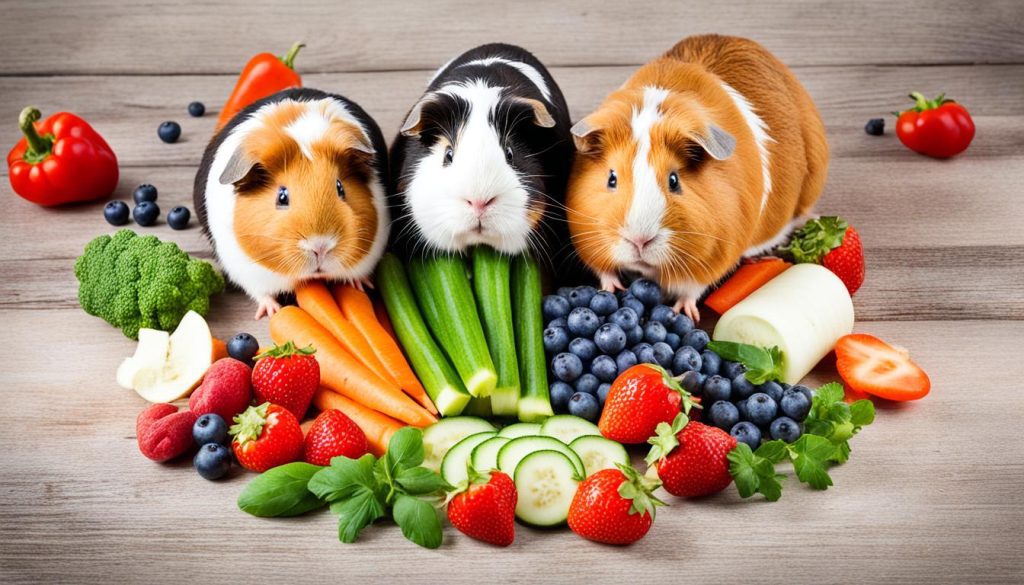
Foods to Avoid Giving Guinea Pigs
When it comes to the diet of guinea pigs, there are certain foods that should never be given to them. These foods can cause serious health issues and even be fatal for our furry friends. It is crucial to be aware of these dangerous foods and take necessary precautions to keep guinea pigs safe and healthy.
Rhubarb
Rhubarb is one of the most dangerous foods for guinea pigs. It contains toxic substances, including oxalic acid, which can be harmful and even fatal if consumed. It’s important to ensure that guinea pigs never have access to rhubarb in any form, whether it’s raw, cooked, or in the form of rhubarb-based products.
Avocado
Avocados should never be fed to guinea pigs. Avocados contain a substance called persin, which is toxic to guinea pigs and can cause digestive upset, respiratory problems, and even death. Additionally, avocados have a high fat content, which can lead to obesity and related health issues in guinea pigs.
Dried Fruit
While fresh fruits are generally safe for guinea pigs in moderation, dried fruits should be completely avoided. Dried fruits have a concentrated sugar content, which can lead to digestive problems and obesity in guinea pigs. It’s best to stick to fresh fruits as occasional treats and ensure they are given in small, appropriate portions.
Chives and Other Onion Family Foods
Foods from the onion family, including chives, garlic, and onions, should never be included in a guinea pig’s diet. These foods contain substances that can cause severe digestive upset, anemia, and even damage to red blood cells, leading to serious health complications. It’s important to keep guinea pigs away from any food that belongs to the onion family.
In order to maintain the health and well-being of guinea pigs, it is crucial to be cautious about the foods we offer them. By avoiding dangerous foods like rhubarb, avocado, dried fruit, and foods from the onion family, we can ensure that our guinea pigs stay happy and healthy for years to come.
Optimal Diet for Guinea Pigs
A healthy guinea pig diet consists of a combination of grass hay, guinea pig pellets, leafy green vegetables, and limited amounts of fruits. Let me break down each component:
1. Grass Hay
Grass hay is a vital part of a guinea pig’s diet, constituting approximately 80% of their total food intake. It aids digestion and helps maintain healthy teeth. Providing high-quality grass hay, such as Timothy hay or orchard grass, ensures a good source of fiber that promotes a healthy digestive system.
2. Guinea Pig Pellets
Guinea pig pellets fortified with Vitamin C should be given in appropriate portions. These pellets are specifically formulated to meet the nutritional needs of guinea pigs. As diligent pet owners, we must check the packaging and choose pellets that provide essential nutrients and a proper ratio of vitamins and minerals.
3. Leafy Green Vegetables
Leafy green vegetables like romaine lettuce and parsley are excellent additions to a guinea pig’s diet, providing essential nutrients. These greens are rich in Vitamin C and other vitamins and minerals that contribute to optimal guinea pig nutrition. Remember to introduce new greens gradually to avoid digestive upset and monitor your guinea pig’s preference for different vegetables.
4. Limited Amounts of Fruits
Fruits can be included in a guinea pig’s diet, but they should only make up a small percentage. While fruits contain natural sugars and may be enjoyed as a treat, excessive sugar intake can lead to digestive issues. Some fruits that guinea pigs can enjoy in moderation include apples, bananas, and berries. Offer small portions, and remove any uneaten fruit within a few hours to prevent spoilage.
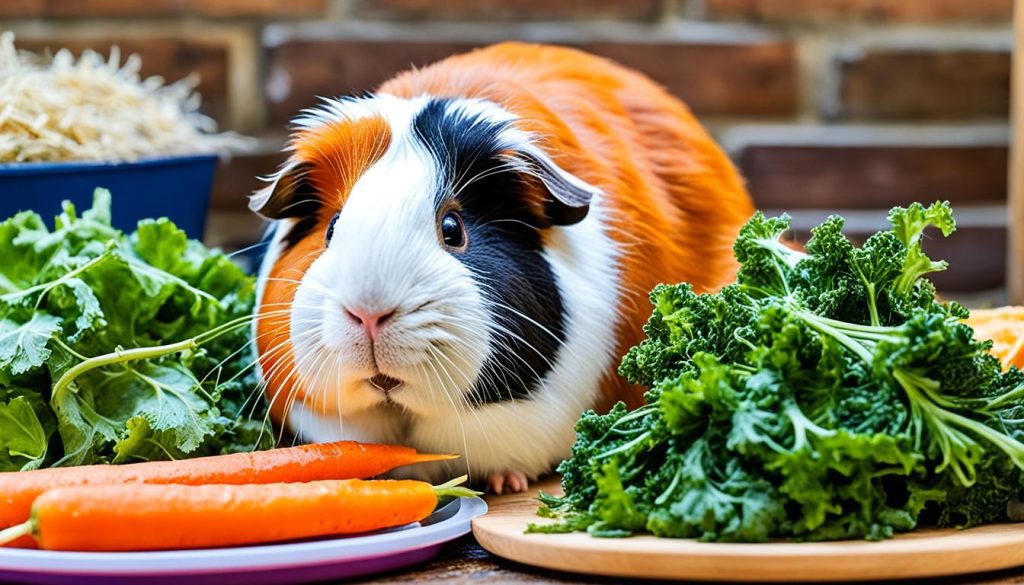
Remember, maintaining a balanced and varied diet is crucial for the overall health of your guinea pig. As herbivores, their nutritional needs primarily revolve around hay, pellets, and fresh vegetables. Fruits should be viewed as occasional treats rather than a staple in their diet.
By following this optimal diet plan, you can ensure that your guinea pig receives a well-rounded, nutritious diet that promotes their overall well-being.
Feeding Tips and Precautions
When it comes to feeding guinea pigs, there are a few important tips and precautions to keep in mind to ensure their health and well-being.
1. Remove uneaten perishable foods promptly
It is crucial to remove any uneaten perishable foods from your guinea pig’s cage promptly. This prevents spoilage and reduces the risk of bacterial growth, which can be harmful to your pet’s health.
2. Replace pellets daily
Pellets are a staple part of a guinea pig’s diet and should be replaced daily. This ensures that the pellets remain fresh and retain their vitamin C content, which is essential for your guinea pig’s overall health.
3. Provide a steady amount of produce
In addition to pellets, it’s important to include a variety of fresh produce in your guinea pig’s diet. However, it’s crucial to provide a consistent amount of produce to avoid sudden changes in their diet, which can cause digestive upset.
4. Monitor for overeating or loss of appetite
Keeping an eye on your guinea pig’s eating habits is essential. Look out for signs of overeating, which can lead to obesity, and monitor for any sudden loss of appetite, which may indicate an underlying health issue.
5. Introduce new foods gradually
When introducing new fruits and vegetables into your guinea pig’s diet, it’s best to do so gradually. This allows their digestive system to adjust to the new food and reduces the risk of digestive upset.
6. Understand stool-eating behavior
Don’t be alarmed if you notice your guinea pig eating its own stool occasionally. This behavior, known as coprophagy, is a natural way for guinea pigs to obtain essential nutrients that may have been missed during the initial digestion process.
By following these feeding tips and precautions, you can ensure that your guinea pig receives a balanced and healthy diet that meets their nutritional needs. Remember, a well-fed guinea pig is a happy and thriving pet!
Conclusion
When it comes to including oranges in a guinea pig’s diet, moderation is key. While oranges can be a healthy addition due to their vitamin C and fiber content, the high sugar levels necessitate caution. Maintaining a balanced and varied diet is crucial for the overall well-being of guinea pigs, incorporating other nutritious options like bell peppers and lettuce.
It is equally important to be aware of the foods that are harmful to guinea pigs, such as rhubarb, avocado, dried fruit, and the onion family. By avoiding these dangerous foods, we can ensure the safety and health of our furry friends. Following proper feeding tips and precautions, like promptly removing uneaten perishable foods and replacing pellets daily, will help maintain a healthy guinea pig diet.
Remember, caring for a guinea pig involves providing them with the necessary nutrition and maintaining their overall well-being. By offering a well-balanced diet and a variety of healthy snack options, we can keep our guinea pigs happy and thriving. When it comes to their diet, oranges can be a part of it, but always in moderation.

